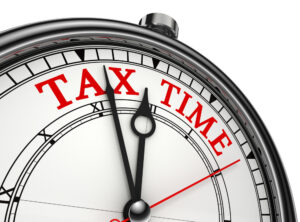What to do if you miss a quarterly estimated tax payment
 Many taxpayers maintain their federal tax withholdings as low as possible to prevent the IRS from receiving their funds at zero interest throughout the year. Others must pay the IRS every quarter, particularly those with non-payroll income. You can avoid late penalties as long as you pay these quarterly payments on time and the payment is a sufficient amount in the eyes of the IRS. In addition to the income tax payable, the IRS imposes late payment penalties if the amount owed is underpaid. The penalty still applies even if you submit your 1040 tax return before the April 15th deadline.
Many taxpayers maintain their federal tax withholdings as low as possible to prevent the IRS from receiving their funds at zero interest throughout the year. Others must pay the IRS every quarter, particularly those with non-payroll income. You can avoid late penalties as long as you pay these quarterly payments on time and the payment is a sufficient amount in the eyes of the IRS. In addition to the income tax payable, the IRS imposes late payment penalties if the amount owed is underpaid. The penalty still applies even if you submit your 1040 tax return before the April 15th deadline.
The Safe Harbor rule
If you are still determining whether you owe a late tax payment penalty, consult the tax code. The Safe Harbor Rule is the name of the law. You can avoid penalties if you adhere to the regulations. Here is a quick overview:
- There are no underpayment penalties if your federal tax liability is less than $1,000.
- You withhold at least 90% of this year’s required federal tax payment.
- You withhold at least 100% of the tax due from the previous year.
- If your yearly gross income exceeds $150,000 ($75,000 if you’re married filing separately), you must withhold the lesser of 90% of your tax obligation for this year OR 110% of the tax reported on your tax return from the previous year.
What can you do if you think the federal tax withholdings made so far this year are too low?
How to avoid late payment penalties
Suppose an employee was underpaid or forgot to pay your estimated tax payment for a quarter. In that case, there may be a method to avoid a penalty. Later in the year, they can increase payroll deductions to build up federal deductions to make up the difference. According to IRS penalty estimates, it wouldn’t be possible to make up the gap from the previous quarter by paying extra on a subsequent estimated quarterly tax payment.
Payroll withholdings are, for whatever reason, considered as if they were all made at the start of the year. In contrast, quarterly tax payments (form 1040-ES) are tracked by the date received.
Submit a new W-4 to your employer to boost your withholdings. Just be sure to budget your paycheck so that you have enough money to cover other expenses. If you have any questions or concerns regarding your tax situation, please contact RRBB Advisors.
RRBB eNEWSLETTER
Get free tax planning and financial advice




